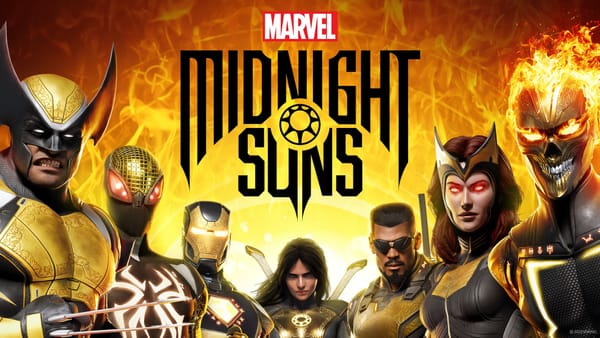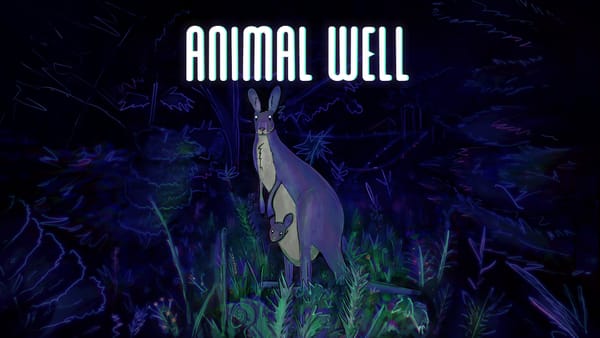Tunic and putting the game before the mystery
Fez walked so that Tunic could run
I wanted very badly to like Fez. I first heard about it on the 1UP Show,1 where I remember thinking this was just the game I wanted to see in the world. It was a brainy, strange platformer with a terrific aesthetic. But it was also, I quickly found out, a giant logic puzzle—a giant logic puzzle that I couldn’t figure out without the use of a guide. Looking up how to “solve” Fez’s mysteries, the game lost its appeal for me. Fez, for better or worse, is composed nearly entirely of that kind of ur-puzzle, where figuring out what you’re supposed to be doing is the game. I quit playing after that, but I found myself wishing that I could’ve gotten more out of Fez than I did.
Tunic, which I would argue is a Fez-like, gave me exactly what I wanted back in 2012: something I, someone with limited patience and poor lateral thinking skills, could play to completion. Or near to completion.
Tunic’s central conceit is that you are putting together a Prima Games-esque guidebook for Tunic while you play Tunic. You pick up pages of the book as you traverse the world, reconstructing it page-by-page, albeit out of order and in a made-up, pictographic language of the developers’ own creation, with a smattering of English here and there to help get you going. The game-game of Tunic is a top-down Zelda-like with Dark Souls influences,2 requiring only moderate lateral thinking skills to navigate, as you flip back and forth between the incomplete game guide and the game world, puzzling together where to go next and how to accomplish what it is you need to do. Exploration, puzzle solving, and enemy encounters were all satisfying in their own right, separate from the weirder stuff that was happening in the background, but even the weirder stuff felt approachable to me, solvable in a way Fez never did. At least, up until a point.
Wow, two spoiler breaks? Yes, two spoiler breaks. For-real for real: what comes next will entirely spoil something major about Tunic, and honestly, I’ve gone above and beyond to flag this for you, so don’t come knocking on my door with a spoiler petition if you proceed.
You can beat Tunic and get the bad ending without having to be a smarty pants. I know this to be true, because I am not a smarty pants and was able to do the enough puzzling of the guidebook to get to an ending, if not the ending. The main challenge to get to the bad ending is whether or not you can defeat the game’s central bosses, which do require a fair amount repetition and mastery to surpass. You do have to piece together certain rudimentary puzzles via referencing the in-game manual, but they’re mostly just discerning where plot-critical items are hidden in the world and how that world connects upon itself. Crucially, the “bad” ending is still enjoyable to reach. It feels complete. You get a complete experience. Sure, it’s sad—but at least it’s there. There is no Fez-like sense of not even scratching the surface if you fail to solve the game’s larger mystery. Which is why I felt no compunctions in using an actual guide to complete the big brain puzzle that is the heart of what makes Tunic unique.
At a certain point in Tunic, you start getting a lot of hints referencing something called the Golden Path. In truth, the Golden Path was referenced in the guidebook very early on, but like a lot of things in the book, you learn to skim over it to get to the usable information. It turns out, however, that following the Golden Path, which requires you to press an obscure pattern of inputs on the directional pad, is the only way to see the true ending. I feel proud to say that I at least figured out for myself how to do the obscure pattern of inputs via looking at the guidebook and thinking real hard. I also feel proud to say I immediately recognized I would not enjoy the sleuthing that the Golden Path was asking of me, so I chose instead to make liberal use of the PS5’s inbuilt hint system.
Hidden within Tunic are rooms that, should you know to look for them from the start of the game, are there, waiting for you at any point, with puzzles that are nothing like the rest of the puzzles in the game. They’re strange. Almost glitchy. They acknowledge that you have the guide in a way the rest of the game doesn’t. One room, for example, features one of the game’s basic enemies walking around in the dark on a platform you aren’t able to reach. It becomes clear that he’s walking in a pattern of (you guessed it) an obscure pattern of inputs on the directional pad. At this point, you could watch him and write down each turn he takes (left, right, up, up, left, down, up). Or you could do what I did, which was use the PS5’s hint system to get the required inputs and move on from the room.
You can reasonably argue that I stole something from myself by doing this. That the biggest pleasure of Tunic is that big brain puzzling. To which I reply: I am happy that some people get to experience that, but I know such things aren’t for me. The final puzzle3 of Tunic, which requires an incredibly long (and easy to mess up) series of inputs on the directional pad determined by an arduous, albeit incredibly clever process, is something I can appreciate from a distance. That is, I can say: “Wow, that must’ve been really satisfying to figure out for some people.” And because there was a whole game before that moment—a whole game that I, a normie, could adequately play—I felt happy to know it was there, waiting, for someone more patient than me.
RIP to a great one. RIP also to me being obscure about my age. ↩
A mashup that’s becoming a genre in its own right these days. ↩
Well, final-ish. Turns out, there’s even more to the game than I realized since I completed it. ↩





